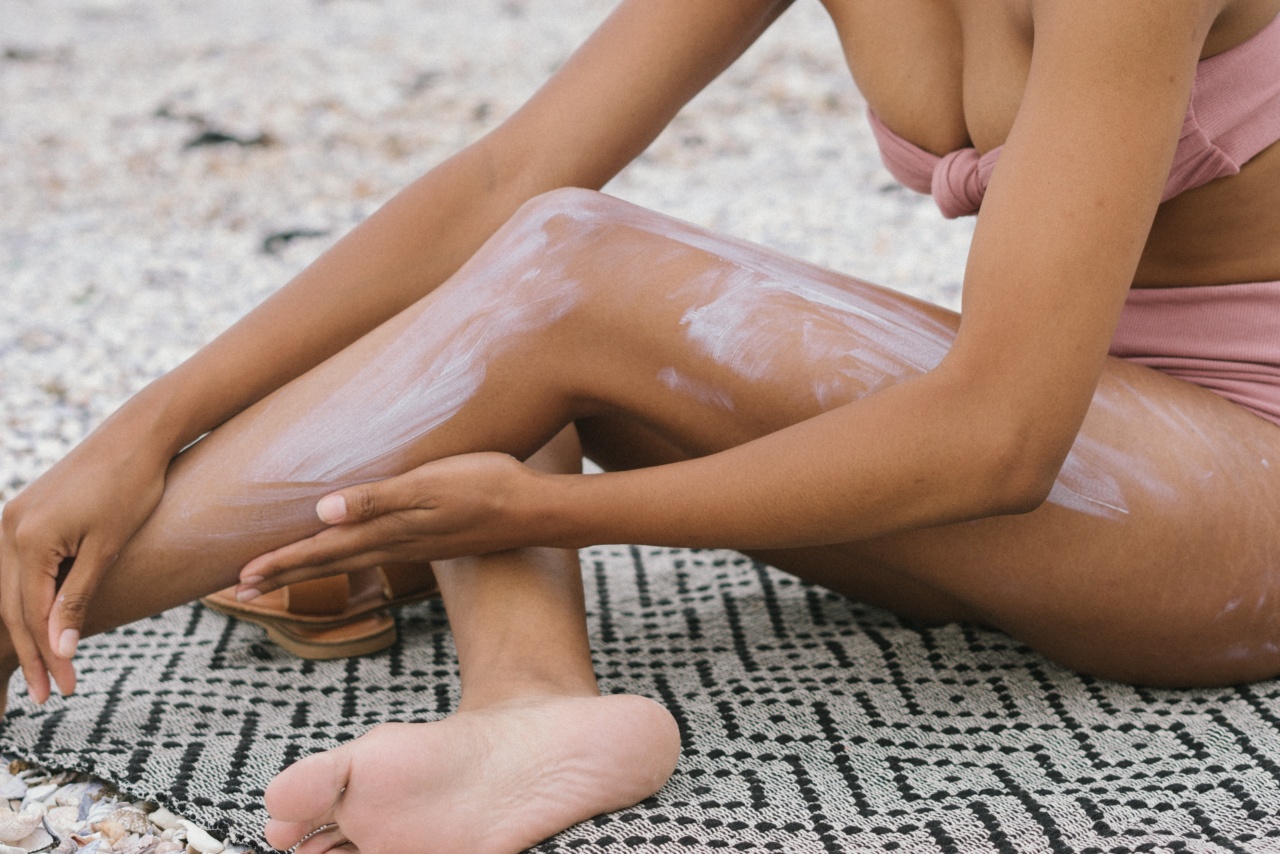Sunbathing is a popular leisure activity enjoyed by many people around the world. Basking in the sun’s warm rays can be a relaxing and enjoyable experience, providing a healthy dose of vitamin D and a natural tan.
However, excessive sun exposure can have detrimental effects on your skin, leading to premature aging and the development of wrinkles. In this article, we will explore how sunbathing affects your skin and why it is important to protect yourself from the harmful rays of the sun.
The Science behind Sunburn
When you expose your skin to the sun, it is bombarded with ultraviolet (UV) radiation. The sun emits two types of UV rays – UVA and UVB.
While UVA rays penetrate deep into the skin and cause long-term damage, UVB rays are responsible for sunburns and immediate skin damage. When your skin is exposed to UV radiation, it triggers several reactions that impact its health and appearance.
Collagen Breakdown
One of the main reasons sunbathing leads to wrinkles is the breakdown of collagen in the skin. Collagen is a critical protein that provides structure and elasticity to the skin.
UV radiation damages collagen fibers, causing them to weaken and break down over time. As a result, the skin becomes less firm and loses its ability to bounce back, leading to the formation of wrinkles and fine lines.
Dehydration and Dryness
Extended sun exposure can cause your skin to become dehydrated and dry. Sunbathing in hot weather increases the evaporation of moisture from the skin’s surface, leaving it parched and lacking essential hydration.
Dehydrated skin is more prone to wrinkling and can appear dull and lifeless. Additionally, excessive sun exposure can disrupt the skin’s natural lipid barrier, leading to further moisture loss and exacerbating dryness.
Pigmentation Issues
Sunbathing without proper sun protection can result in various pigmentation issues, including sunspots, freckles, and melasma. UV radiation stimulates the production of melanin, which is responsible for giving color to our skin, hair, and eyes.
While melanin acts as a natural defense against sun damage, prolonged or intense sun exposure can cause an uneven distribution of melanin, leading to the formation of dark spots and patches on the skin.
Impaired Cellular Renewal
The sun’s rays can also interfere with the skin’s cellular renewal process. Healthy skin constantly regenerates itself by shedding old skin cells and replacing them with new ones.
However, excessive sun exposure can disrupt this natural renewal cycle, leading to a buildup of dead skin cells on the surface. This can contribute to a dull complexion, clogged pores, and the formation of wrinkles.
Elastin Degradation
In addition to collagen, the sun also damages another important skin protein called elastin. Elastin is responsible for giving the skin its elasticity and allowing it to stretch and bounce back.
When elastin fibers are exposed to UV radiation, they become weak and degrade, leading to a loss of skin elasticity. Without sufficient elastin, the skin becomes less resilient to stretching and contracting, resulting in the formation of wrinkles and sagging.
Increased Free Radical Production
Sun exposure increases the production of free radicals in the skin. Free radicals are unstable molecules that can cause significant damage to the skin and other cells in the body.
They contribute to oxidative stress and inflammation, promoting the breakdown of collagen and elastin and accelerating the aging process. Ultimately, increased free radical production can lead to the development of wrinkles and other signs of premature aging.
Sunburn and Inflammation
Getting sunburned not only causes temporary pain and discomfort; it also triggers inflammation in the skin. Sunburn is a visible sign of skin damage and indicates that your skin has been exposed to excessive amounts of UV radiation.
Inflammation from sunburn can exacerbate the aging process, impair the skin’s natural healing abilities, and increase the risk of long-term sun damage.
Sun Protection Tips
While it’s essential to protect your skin from the harmful effects of sun exposure, it doesn’t mean you have to avoid sunbathing altogether.
By following a few simple sun protection tips, you can enjoy the sun responsibly while minimizing the risks to your skin:.
1. Wear Sunscreen
Always apply a broad-spectrum sunscreen with an SPF (sun protection factor) of 30 or higher before heading out into the sun. Make sure to reapply every two hours and after swimming or sweating excessively.
2. Seek Shade
During the peak hours of 10 am to 4 pm when the sun’s rays are the strongest, seek shade whenever possible. You can relax under an umbrella, a tree, or use a sunshade to protect yourself from direct sun exposure.
3. Wear Protective Clothing
Cover up your skin with loose-fitting, light-colored clothing to shield it from UV radiation. Opt for wide-brimmed hats and UV-protective sunglasses to further protect your face and eyes.
4. Use Sun-Protective Accessories
Consider using sun-protective accessories such as umbrellas, sun sleeves, and UV-protective swimwear to provide added protection to your skin while sunbathing.
5. Stay Hydrated
Drink plenty of water to keep your skin hydrated from within. This can help combat the drying effects of the sun and maintain the skin’s moisture balance.
6. Gradual Exposure
If you’re not accustomed to spending long hours in the sun, gradually increase your exposure time to avoid overexposure. This can help your skin adapt and reduce the risk of sunburn.
Conclusion
Sunbathing can be a delightful experience if done responsibly and with adequate sun protection measures.
While moderate sun exposure is necessary for vitamin D synthesis and overall well-being, excessive sunbathing can significantly damage your skin and lead to the development of wrinkles. By understanding the underlying mechanisms and following proper sun protection tips, you can enjoy the sun safely while keeping your skin healthy and youthful for years to come.





























